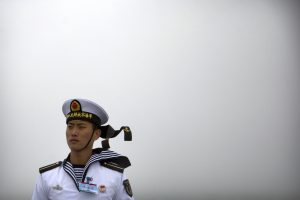Bharat Karnad
It is not hard to see why China decided at this time to pick at the scab of the disputed border with India by starting ruckuses along the length of it at Daulat Beg Oldi, Galwan Valley, the Pangong Lake, Bararahoti, and Naku La in Sikkim. Xi Jinping and his ruling cohort find their pretense to Asian hegemony challenged in their own backyard. Developments in Taiwan and Hong Kong have shred China’s ‘one country, two systems’ policy. President Tsai Ing-Wen, elected to a second term, has made it clear that Taiwan is separate from China and sovereign. The people of Hong Kong, with less latitude, are fearlessly resisting rule by Beijing’s puppets.












/cloudfront-us-east-1.images.arcpublishing.com/mco/RUHVN45WO5DQNIK6WANP2WLJGM.JPG)